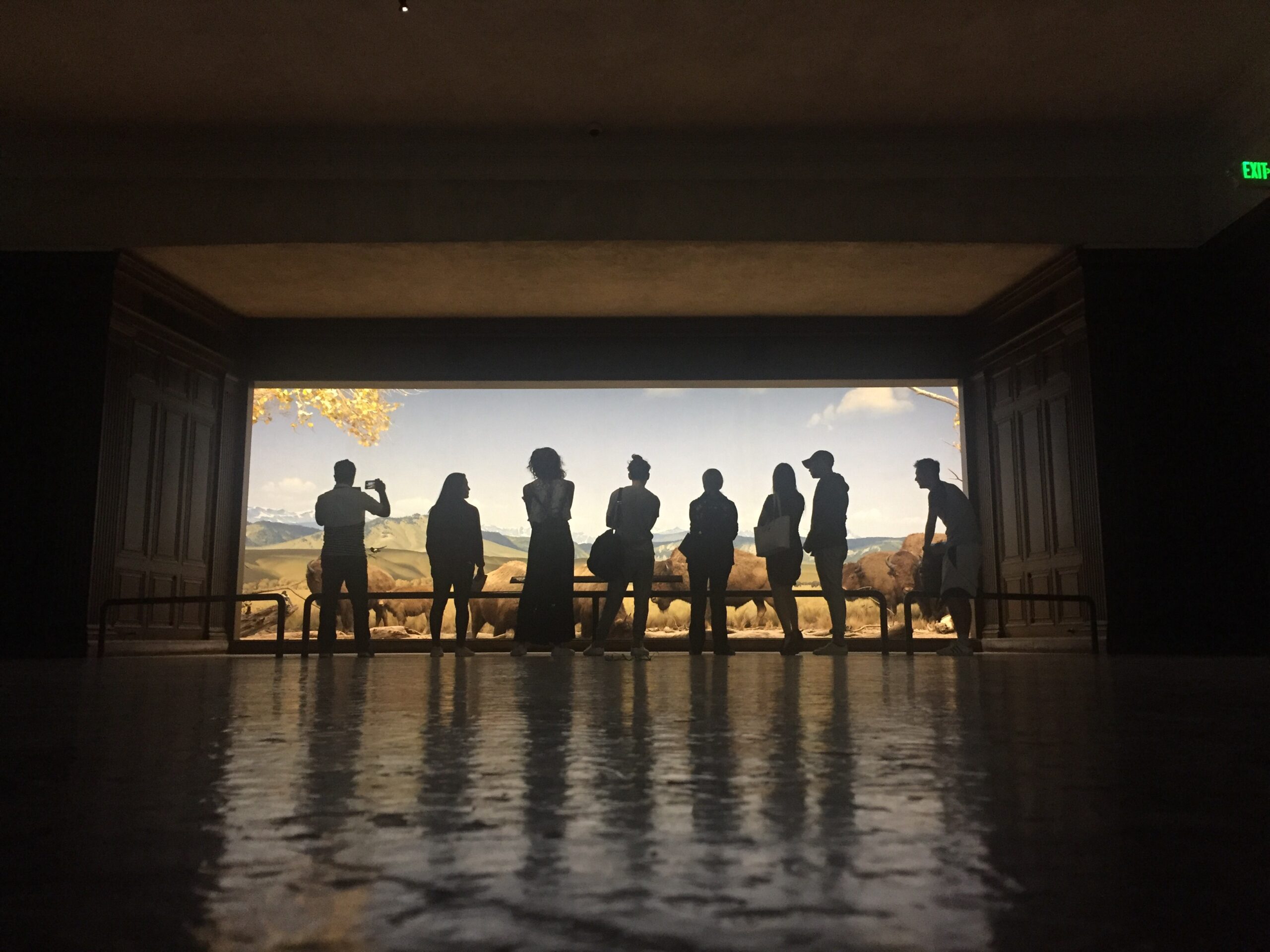The New York Film Academy prides itself in its “learn by doing” approach to curriculum instruction; students are not just lectured on concepts but are able to get their hands on equipment and physically learn the tools and techniques they will need in their trade. This concept was extended this week in the Sciences here at NYFA as Environmental Biology instructors took every one of their 120 students to the Los Angeles Natural History Museum. They visited five exhibits in particular that reinforced class curricula; students observed specialized adaptations of today’s mammals in the North American Mammal Hall and the African Mammal Hall, they witnessed the evolution of the modern human in the Age of Mammals exhibit (where famous Lucy is housed!), colossal dinosaur fossils awed in the Age of Dinosaurs exhibit, and species of native plants and animals were identified in the museum’s serene Nature Gardens.

Learning a concept from a PowerPoint in class can’t compare with seeing it unfold in front of your eyes. It is one thing to be lectured on natural selection in a classroom, for example, and another to observe the changes in mammal skeletons over thousands of years as they became what they are today, and speculate as to the reasons why. Pig-sized horses just couldn’t run away fast enough from predators of the era, so they developed longer and longer legs until they could! Those with short legs died before they could reproduce and pass on their short-legged genes. The result is the modern day, long-legged horse. This concept was reinforced in the Age of Dinosaurs exhibit, where students were asked to come up with what types of adaptations a modern dinosaur might have in order to live on today’s planet.
Students were also able to put their ecology chops to the test, as they had to organize living plants and animals in the Nature Gardens into the food web of California’s native ecosystem. They discovered that when you take a moment to document all the life around you, you realize that, even in Los Angeles, we are surrounded! The idea here was that an appreciation of nature and the life around us not only reinforces concepts of biodiversity learned in class, but also hopefully instills more application of conservation in student’s lives.
Instructors were thrilled at the profusion of “wows” and wide eyes. Such engagement in a subject so outside of their core film school curriculum is impressive and inspiring!